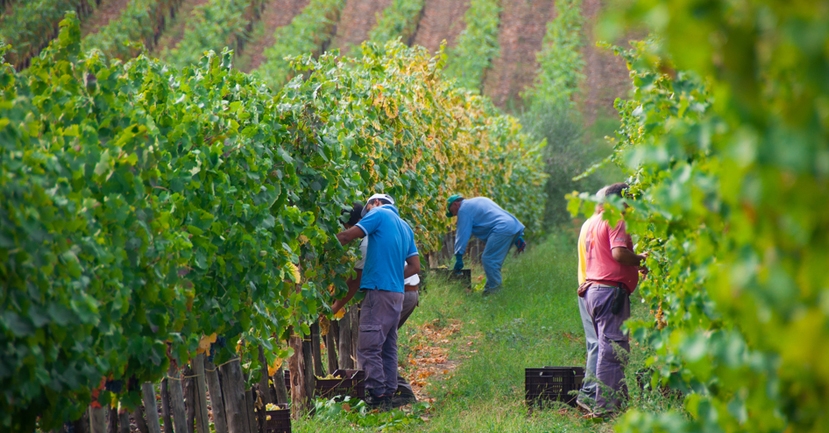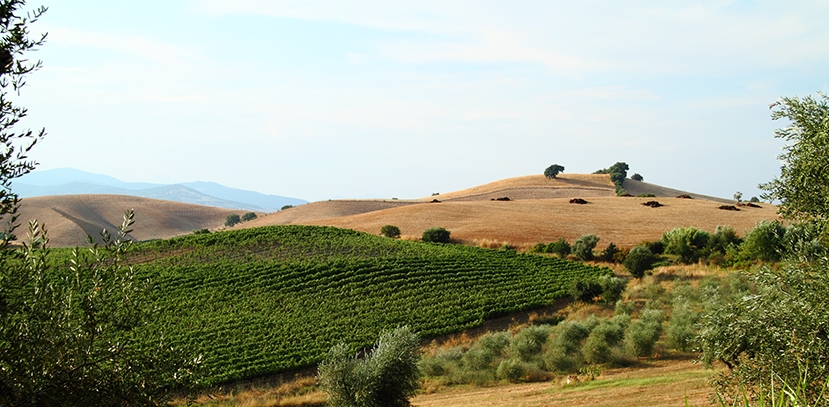BLOG
Sensational Sicily
Abbie Bennington
Regional Spotlight

Sicily captivates wine enthusiasts and travellers around the world, an island that in recent years has become famous not just as a holiday destination (White Lotus fans can attest) but also for the growing production of high-quality wines.
A Wine Powerhouse in the Mediterranean
“It’s the biggest region together with Veneto. In terms of vineyards, 97,000 hectares. To give you an idea, it's three times more than New Zealand. As big as South Africa and Germany. All from just a small little region, down in the middle of the Mediterranean Sea. We've got today 74 different (Sicilian) varieties.”
So says fifth generation wine maker Antonio Rallo, joint CEO of Donnafugata. They are one of Sicily’s most iconic family-owned wineries. Founded in 1983, Donnafugata is one of the larger producers on the Island. Sicily is home to 23 DOCs, just one DOCG and can boast over a third of its vineyards as organic.
The island has historically often produced as much wine as Australia, Chile and Bulgaria combined*. This, all whilst making remarkable strides in elevating the quality of its top-tier wines. In the past, like the region of Puglia, Sicily once served to produce wines which bolstered northern blends and, less favorably was a major contributor to Europe's wine lake.
A Renaissance in Sicilian Wine
Things, now however, are very different and Sicily is experiencing a continued and exciting renaissance as a producer of fine wines. Surprisingly, the island cultivates significantly more white grapes than red. The local Catarratto grape being so extensively planted that it’s often ranked second only to Sangiovese among Italy's most planted varieties.
“In the last couple of years, two things really helped the success of Sicilian wine outside of Italy. One was tourists, and the other one was Etna.” says Rallo.
The Influence of Mount Etna
Mount Etna, with its unique volcanic soils and favorable climate, has long been recognized as one of the island’s most prestigious wine-growing regions. The DOC itself was founded in 1968 and is home to over 120 single vineyards. The area’s distinctive terroir — a combination of altitude, volcanic ash and cooler climate makes for near perfect conditions for quality wine production. The grapes grown here are at some of the highest elevations (up to 1200 metres) of anywhere in Italy.
White varieties being grown on Etna are more important here than some give credit. It’s interesting to see that it’s these white wines that many producers – not just Donnafugata – are keen to develop.
“We believe that the white grapes from Etna have huge potential. In terms of quality, I love white wine from Alto Adige… I believe that in Etna we will be able to produce white wine as good as Alto Adige.”
Antonio is referring here to the grape Carricante one of more than ten indigenous varieties that Donnafugata have cultivated in Sicily. A late ripening grape with high acidity and citrus flavours of lemon, lime and grapefruit. Much work has been done with working with this grape through research into the various biotypes that occur within the vineyards on the slopes of Etna.
Etna has a cool, high-altitude continental climate which differentiates it from the rest of the Mediterranean island’s climate. With significant diurnal ranges it’s easy to understand why white grapes grown on the part of the volcano can retain their high acidity.
From Bulk Wine to Premium Bottles
The volume of cheap easy drinking wines from the island may now be a part of its past, as the demand for top tier wines from Sicily is on the rise. With this shift comes an increase in the price of vineyards, with Donnafugata noting their 34 hectares on Mount Etna are worth somewhere in the region of 8.5 million euros. Will this region become more exclusive to consumers and visitors alike?
“In the last two years, I'm telling a new story. In the past, a lot of people were saying that it was difficult to sell wines because there was too much wine. Now I say that the problem is not selling wine, it's producing wine. So just think about Italy. In 2023, we produced 38 million hectolitres, and we are selling 45 hectolitres. This year, we will produce maybe 40 million and we are still selling 45 hectolitres!”
Here Antonio is referring to the poor harvest last year in parts of the south of Italy following droughts in the region. These droughts although devastating for many producers provide opportunities for Sicilian wines in the future.

Climate Challenges and Future Potential
Looking ahead where does the wine production of Sicily see its potential for growth? With demand outstripping supply on the island, is Etna the answer to many producers’ prayers? Given Etna’s high altitude and cooler climate there are opportunities for expansion; but also to mitigate concerns about increasing temperatures due to climate change at lower elevations.
“Of course, if you think about rain, in the last 10 to 20 years we have had 10 to 20% more rain. But the way it's raining is different It's more intense, more concentrated. We had a lot of rain in the east of Sicily. We had 400 millimetres in 72 hours!”
To put this figure into context annually Bordeaux has around 950 mm or rain a year compared to Burgundy at 650 mm. Water scarcity remains a concern for many global wine regions and Sicily is not immune to the issue given its location. Here at least with better husbandry and a respect for the environment, the resilience of the island’s producers puts them in a strong position.
The Perfect Time to Explore Sicilian Wine
In short, there’s never been a better time to explore the island and its vineyards where quality, tradition and excellence meet. For those interested in learning more about Sicily first hand, Wine Scholar Guild have organized an exploration of the island later this year with Master of Wine Pietro Russo. See details below.
Explore Silicy’s Best Wine Producers
Want to learn about the top wine producers of Sicily? Explore our Sicily Producer Guide below.






